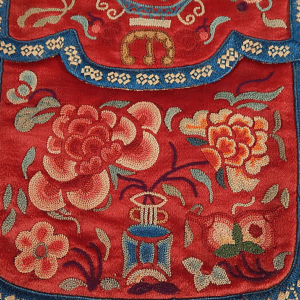About the Culture
About the Culture

Blessing Phrases “祝福语”
Chinese blessing phrases, or “祝福语” (zhù fú yǔ), are a cherished cultural tradition, deeply rooted in history and rich in meaning. These expressions reflect fundamental values such as harmony, prosperity, longevity, and happiness. Typically composed of four Chinese characters, these fixed phrases are concise, memorable, and elegantly crafted, showcasing both linguistic artistry and cultural wisdom. They are commonly used during festive occasions such as the Lunar New Year, as well as important life milestones including weddings and birthdays.
Fragrant Sachets “香囊”
Fragrant sachets, or “香囊” (xiāng náng), are traditional Chinese embroidered pouches with origins dating back to the Shang and Zhou dynasties. Initially used to carry small personal items, they later evolved into decorative and aromatic accessories worn by both men and women. Typically filled with fragrant herbs or traditional Chinese medicine, these sachets served both personal and ritual purposes, believed to ward off evil spirits, illness, and insects. They were also commonly gifted by women as tokens of affection.
The designs often featured motifs such as flowers, animals, musical instruments, books, and romantic figures, each symbolizing specific wishes or values. For instance, tigers represented strength and protection for children, while cranes and pine trees signified longevity for the elderly.
Wearing sachets during the Dragon Boat Festival (Duanwu Festival) is a long-standing tradition, especially for women and children. This custom honors the revered poet and statesman Qu Yuan, who drowned in the Miluo River on the fifth day of the fifth lunar month. To commemorate his legacy, people carry scented pouches, believed to offer protection from misfortune.
Embroidery “繡”
Chinese embroidery, or “繡” (xiù), has a history spanning over 5,000 years, tracing back to the domestication of silkworms and the early production of silk. During the Han dynasty, the opening of the Silk Road facilitated the exchange of goods and culture, leading to the widespread popularity of Chinese embroidered textiles across Central Asia and Europe.
By the 14th century, silk embroidery in China had reached its artistic height. Over time, four distinctive regional styles—Xiang, Shu, Yue, and Su—emerged and became renowned for their technical mastery and aesthetic beauty. Today, these styles are recognized as significant cultural heritage.
Chinese embroidery continues to thrive in the modern era, with ancient techniques still influencing contemporary textile and fashion design.
